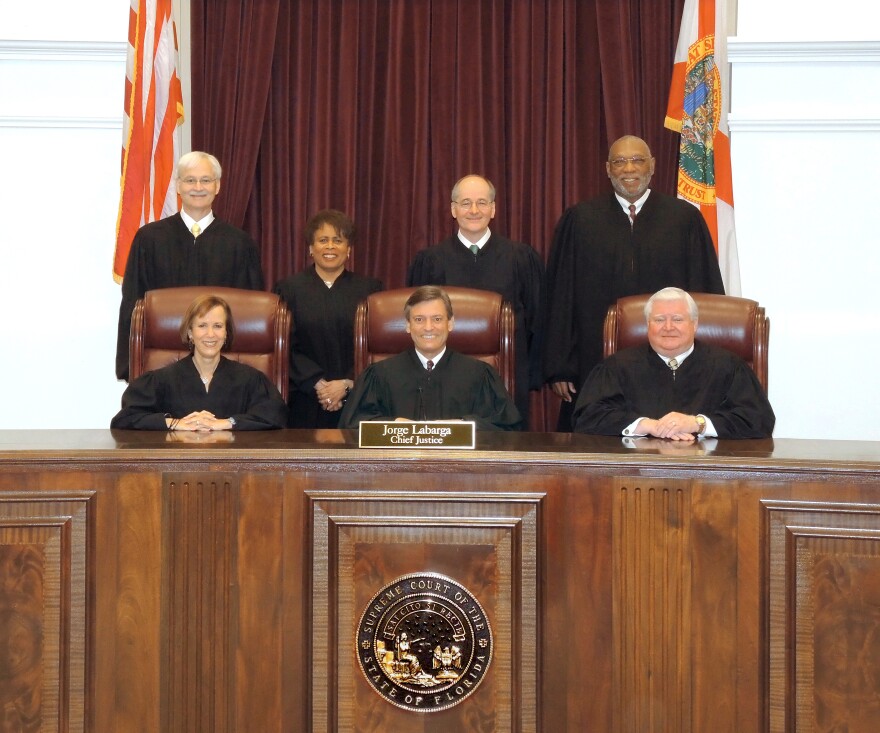The Florida Supreme Court should order a third draft of the state's congressional districts to fully eliminate illegal gerrymandering, attorneys for groups that have challenged the map argued Wednesday.
But lawyers for the Legislature said Leon County Circuit Judge Terry Lewis acted appropriately last year when he upheld lawmakers' second version of the map, drawn after Lewis found that political consultants managed to "taint the redistricting process and the resulting map with improper partisan intent" the first time around.
The arguments Wednesday were the latest chapter of a long-running battle between voting-rights organizations like the League of Women Voters and lawmakers about whether congressional and state Senate maps violate the anti-gerrymandering Fair Districts amendments, approved by voters in 2010.
The hearing dealt only with the new congressional map. A related case concerning a challenge to a Senate map --- drawn in 2012 after the Supreme Court struck down the first draft of that plan --- is ongoing.
Plaintiffs, who had initially hailed Lewis' decision to strike down the first draft of the congressional map based on two districts he thought were problematic, later appealed when the judge accepted a redrawn plan that made only as many changes as necessary to correct those districts.
"The entire map should be declared unlawful because the entire process was unlawful," attorney John Devaney told the courtWednesday.
But at least one member of the court's more conservative minority was skeptical that Lewis' ruling supported that claim.
"Where is there a general finding that this whole map was the result of a partisan intent?" asked Justice Charles Canady.
In the first ruling, Lewis struck down Congressional District 5, which winds from Jacksonville to Orlando and is represented by Democratic Congresswoman Corrine Brown, and Congressional District 10, which is in the Orlando area and is represented by Republican Congressman Dan Webster.
Those challenging the maps said the Legislature should have redrawn Brown's district to run from east to west, instead of continuing to run north to south. The NAACP, however, filed a brief backing the current configuration because the civil-rights group fears an east-west map could hurt the ability of African-Americans to elect a candidate of their choice in that district.
The plaintiffs also highlighted the configuration of two Tampa Bay districts, saying they closely tracked a map drawn by consultants that was submitted to the Legislature's public input system under the name of former Florida State University student Alex Posada, who later testified that he didn't draw the map.
But Raoul Cantero, a lawyer for the state, pointed out that other groups, including the NAACP, submitted maps with a similar configuration.
"If you infer that we're conspiring with Posada, then you also have to infer that we're conspiring with the NAACP," he said.
While four justices asked questions of the lawyers, three members of the 5-2 court majority that threw out the Senate map in 2012 --- Chief Justice Jorge Labarga, Justice R. Fred Lewis and Justice James E.C. Perry --- remained silent. That made it nearly impossible to figure out whether the court might toss the revised congressional districts.
In a sign of the heavy interest in the case, lawmakers like future House Speaker Richard Corcoran, R-Land O' Lakes, potential future Senate President Bill Galvano, R-Bradenton, and Senate Rules Chairman David Simmons, R-Altamonte Springs, took the rare step of attending the arguments.
Galvano said after the arguments that he was confident the new districts would be approved by the Supreme Court, given that the map drawn last summer was not produced by the same process that Terry Lewis faulted.
"By the time Lewis got to the point of upholding what we did in August, he was looking at the entire picture," he said.



